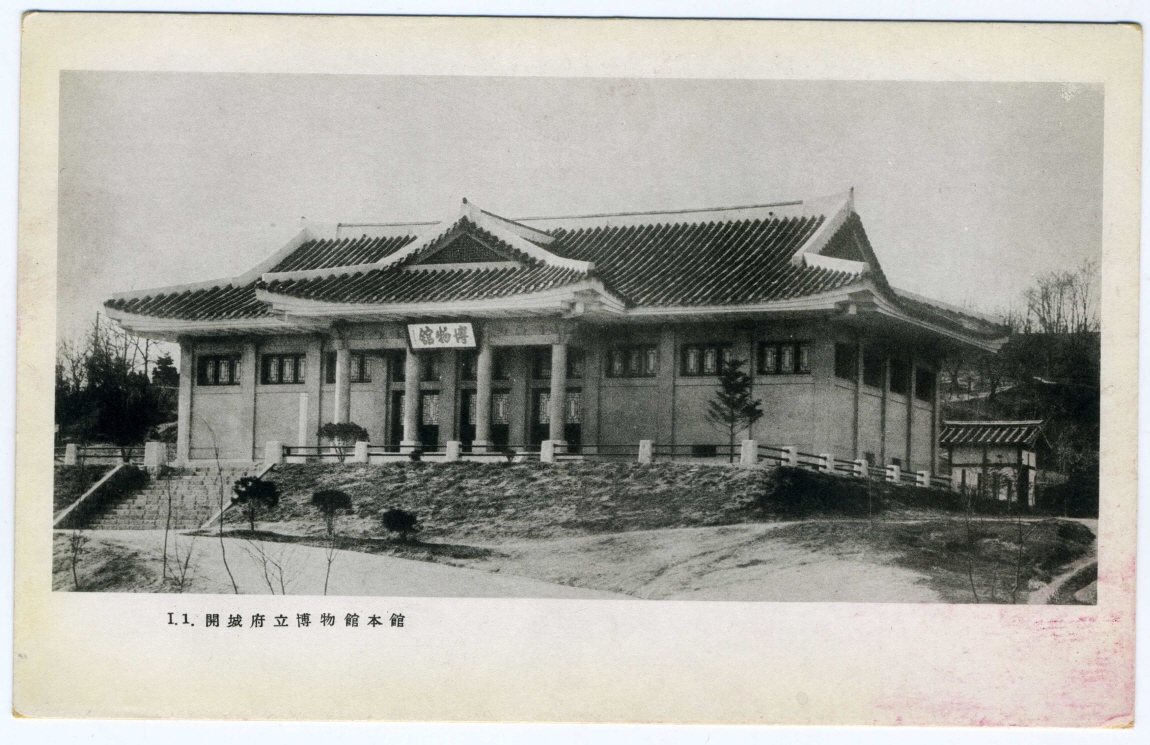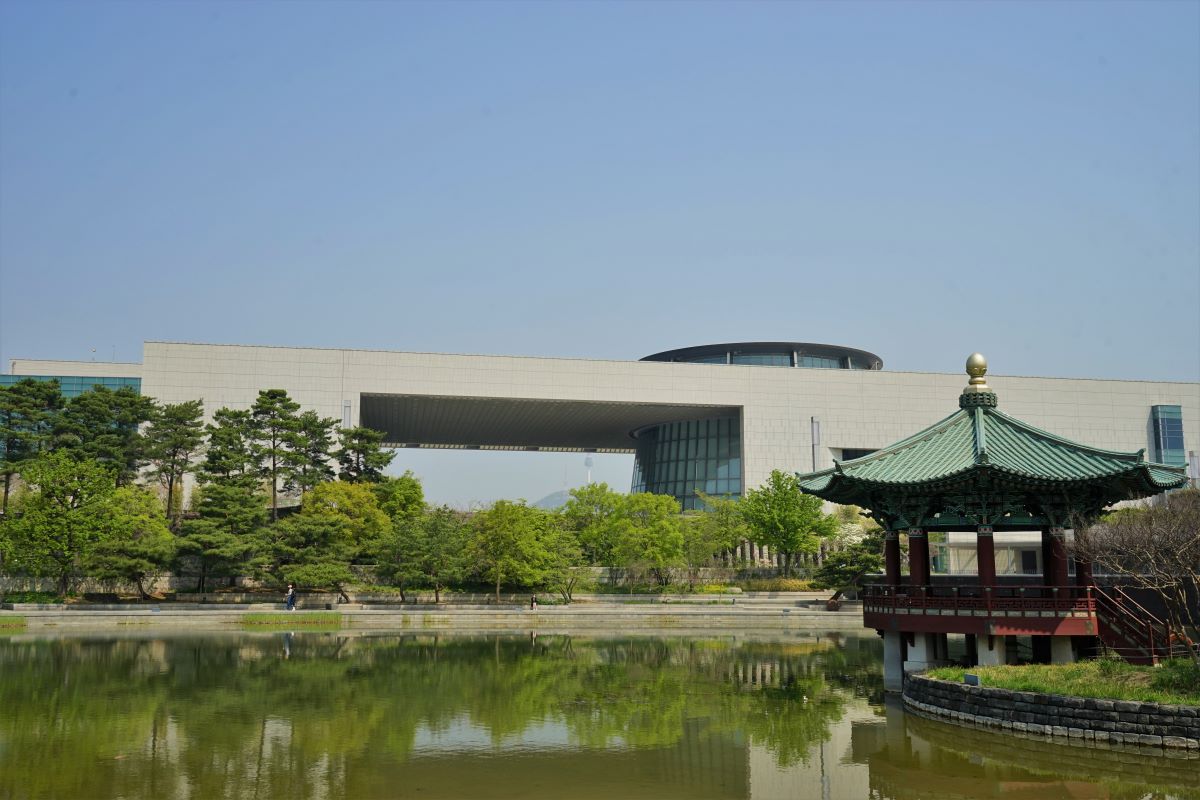
Portrait of Ko Yuseop
Ko Yuseop
* Source: Multilingual Glossary of Korean Art. Korea Arts Management Service
Related
-

Kaesong Museum
The Kaesong Museum is in Kaesong, Gyeonggi-do. It collects, preserves, exhibits, and studies artifacts of the Goryeo Dynasty around Kaesong. The collected items of the Kaesong Boseunghoe, a group of local leaders in Kaesong, in 1912 became its foundation. In 1931, a traditional tile-roofed style house was built near Janamsan Mountain in Kaesong and became the Kaesong Prefectural Museum. Despite heavy Japanese involvement in the administration of arts and antiquities during the colonial period, only Koreans were selected as museum directors. After art historian Ko Yuseop (1904-1944) was appointed as the second museum director from 1933 to 1944, the museum focused on researching and collecting Goryeo artifacts, including ceramics, Buddha statues, and stone pagodas. After Independence in 1946, it was annexed to the National Museum but was disconnected again in 1955 when Kaesong became North Korean territory after the Korean War. However, some Goryeo celadon and craftwork, such as the Incense Burner Celadon with Lion Decoration (national treasure no. 60) is still owned by the National Museum of Korea. The Goryeo Museum was then built as an addition to Kaesong Museum in North Korea to exhibit Goryeo historic and cultural items.
-

National Museum of Korea
The National Museum of Korea is located at 137 Seobinggo-ro, Yongsan-gu, Seoul. The predecessor to the National Museum is the Yi Royal Family Museum founded in September 1908. The Yi Royal Family Museum showcased artwork owned by the royal family of Korea and was opened to the public in November 1909. The museum was relocated from its original home in the Japanese Government-General of Korea building to Gyeongbokgung Palace in 1910 and renamed the Japanese Government-General of Korea Museum in December 1915. The Japanese Government-General of Korea Museum collected and exhibited excavated artefacts and donated items from temples while conducting historical and archaeological research and archiving. The National Museum of Korea was established following the acquisition of the Japanese General-Government Museum in December 1945. In 1969, the National Museum of Korea merged with the Deoksugung Museum, the successor of the Yi Royal Family Museum. In October 2005, the National Museum of Korea moved to a newly constructed building at its current location in Seoul. As of December 31st, 2018, the museum holds a collection of approximately 410,000 pieces that span from the prehistoric to the modern era, and includes works from China, Japan, and Central Asia.
Find More
-

Choi Sunu
Choi Sunu (1916-1984, pen name Hyegok) was an art historian who served as the fourth director of the National Museum. After graduating from Songdo High School in Kaesong in 1936, he worked as a clerk in the Archaeology Department of the Gaepung County Office and studied art history by exploring historical sites with Ko Yuseop. He began working at the Kaesong Provincial Museum in 1946 and was transferred to the National Museum in 1949. When the Korean War broke out, he was tasked with transporting the National Museum’s collection to Busan. He met Jeon Hyeong-pil (pen name: Kansong) when he covered up an attempt to relocate Jeon’s Bohwagak collection in Seongbuk-dong to North Korea, and the two became close friends. Both his pen name “Soonwoo” and his pen name “Hyegok” were given by Jeon Hyeong-pil. Choi later served as the supply department head, curator, and director of the National Museum, leading research and exhibitions on Korean cultural heritage. From the late 1950s, he was in charge of Masterpieces of Korean Art, a traveling exhibition that toured the U.S. and Europe (1957–1959) and curated 2,000 Years of Korean Arts (1973) and 5,000 Years of Korean Art (in Japan in 1976, the U.S. from 1979 to 1981, and in Europe in 1984) to promote abroad the excellence of Korean culture. He was also interested in contemporary art and interacted with contemporary artists, including Kim Whanki, Kim Swoogeun, Chang Ucchin, Kim Kichang, and others. In 1956, he established Art Critics Association along with Kim Youngjoo, Lee Kyungsung, Kim Chung-up, Han Mook, and Chung Kyu. He lectured at Hongik University and Ewha Womans University and in 1981 received an honorary degree of Doctor of Literature from Hongik University. He served as the first president (1965–1966) of the Korean Art Critics Association (Hanguk misul pyeongnonga hyeophoe), a member of the Cultural Heritage Commission, and president of the Art History Association of Korea. Focusing on research on the history of Korean crafts and Korean painting, Choi wrote several publications, including Hoehwa (Painting, 1973), Mokchil gongye (Wood lacquering crafts, 1974), Goryeo doja (Goryeo ceramics, 1975), Hanguk hoehwa (Korean painting 1-3, 1975), Hanguk hoehwa (Korean painting 1-3, 1982), Hanguk cheongja doyoji (Kilns of Korean celadon, 1982), Cheongja – Togi (Celadon and earthenware, 1983). His posthumous works include Choesunu jeonjip (Collected works by Choi Sunu, 1996), Muryangsujeon baeheullim gidunge gidaeseoseo (Leaning against an entasis column of Muryangsujeon hall, 1994), and Naneun naegeosi areumdapda (I think mine is beautiful, 2002).
-

Lee Kyungsung
Lee Kyungsung (1919-2009, pen name Seoknam) was born in Incheon as the first son of Lee Hak-soon and Jin Bo-bae. He graduated from Changyeong Elementary School (1926-31) and Gyeongseong Commercial School (1934-36). In 1937, he moved to Japan and graduated from the Department of Law at Waseda University in 1941. After his return to Korea, he worked as a clerk at the Gyeongseong Court. Later, he returned to Japan to study art history at Weseda University. After independence, he was appointed as the first director of the Incheon City Museum, a director of Hongik University Museum, Walker Hill Art Center (1981-83), and the MMCA (1981-83, 1986-92). He strived to improve the structure of Korean art museums and also trained professional curators. During his appointment as a professor at Ewha Womans University (1957-60) and Hongik University (1961-81), he also served as a chair of the Korean Art Critics Association and published several important books that contributed to the foundation of a modern Korean art history. He established the Seoknam Art Culture Foundation in 1989 and the Seoknam awards for art and art theory. After his retirement, he focused on his art and held numerous solo exhibitions.






